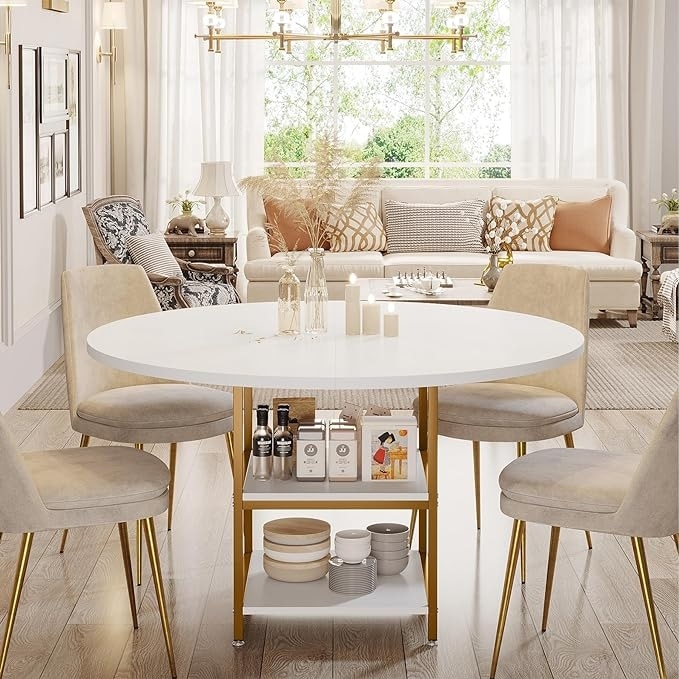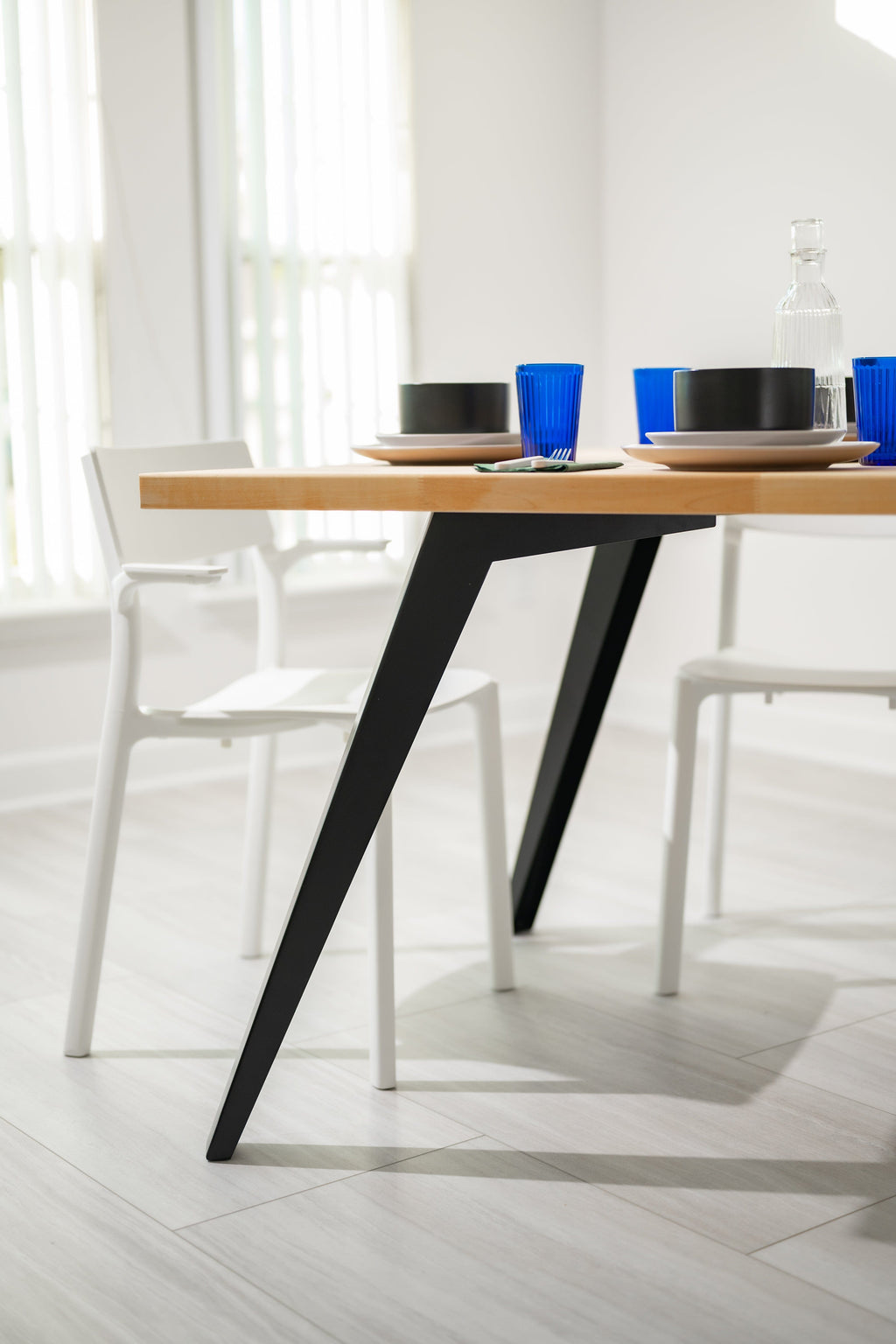Tips for Installing Dining Room Table Legs for a Modern Look
Tips for Installing Dining Room Table Legs for a Modern Look
Blog Article
From Traditional to Modern: Locate the Suitable Dining Space Table Legs for Your Style
The choice of dining-room table legs plays a pivotal function in defining the total personality of your space, linking the void in between conventional workmanship and contemporary aesthetic appeals. While traditional designs such as cabriole and transformed legs evoke a feeling of classic elegance, modern styles like barrette and geometric options offer a chance for striking visual rate of interest. Evaluating the appropriate equilibrium between these styles needs a nuanced understanding of your existing décor and individual preference. As you consider these aspects, the question stays: exactly how can you seamlessly integrate these varied leg designs to create an unified eating experience?
Comprehending Table Leg Styles
The range of dining-room table leg styles can substantially affect both the visual appeals and performance of the room. Each leg style contributes unique useful features and visual aspects, providing to varied style preferences and usage needs. Comprehending these designs is critical for selecting the appropriate table that straightens with your total indoor style vision.
For instance, tapered legs supply a tidy, traditional look that can improve a space's elegance, while stand bases offer stability and optimize legroom, making them excellent for smaller sized areas. Hairpin legs, a characteristic of mid-century contemporary design, present a commercial flair, permitting a ventilated, open feeling. Trestle legs stimulate rustic beauty, providing durable support and a feeling of timelessness.
Wooden legs can bring heat and structure, whereas metal alternatives usually convey a streamlined, modern vibe. Eventually, recognizing table leg styles is vital for creating a natural eating location that reflects personal style while making certain practicality and comfort.
Standard Table Leg Options
When selecting dining area table legs, traditional options commonly personify classic beauty and workmanship. These layouts mirror an abundant heritage and a dedication to quality, making them optimal for those that value timeless appearances.
One of one of the most famous typical leg designs is the cabriole leg, identified by its graceful curved shape. This design typically features decorative carvings and is most typically discovered in Queen Anne and Chippendale furniture. One more prominent choice is the turned leg, which boasts a series of smooth, rounded shapes that give a classic look while maintaining security.
In addition, the straight leg, while basic, offers a unadorned and sturdy structure that can mix flawlessly with a selection of tabletop styles. For those attracted to ornate describing, claw-and-ball feet legs stimulate a sense of majesty and can function as a stunning prime focus in any type of dining space.
Lastly, stand bases, although not purely legs, supply a different standard option that allows for enough legroom and can be beautifully carved. Each of these typical leg styles adds to the total setting of an eating space, marrying feature with aesthetic allure.

Modern Table Leg Layouts
Modern table leg styles offer a diverse variety of styles that stress cutting-edge materials and tidy lines. These designs often focus on capability while functioning as striking prime focus within a dining room. Minimalist aesthetics prevail, with legs crafted from materials such as steel, glass, and engineered timber, which contribute to a ventilated and contemporary feeling.
One popular style is the hairpin leg, defined by its slim, conical structure that gives security without frustrating the tabletop (dining room table legs). This style is often discovered in mid-century contemporary furniture and can easily complement different table forms. One more fad is making use of geometric shapes, where legs might tackle angular or asymmetrical kinds, including aesthetic interest and a touch of creativity

Mixing Designs for Special Areas
Typically, house owners seek to create unique dining areas that reflect their personal style by blending numerous layout aspects. This method permits for the consolidation of diverse looks, leading to an unified yet distinct setting. For example, combining a rustic wooden table with streamlined, contemporary metal legs can develop an attractive contrast that best site raises the space's overall appeal.
In addition, incorporating vintage table legs with contemporary table tops can evoke a feeling of background while preserving a modern perceptiveness. Such combinations not only showcase individual preference yet additionally motivate imagination, allowing property owners to curate a space that really feels both individual and inviting.
Color plays a crucial role in this mixing procedure; choosing table legs that enhance or contrast with the existing color pattern can enhance aesthetic interest. Whitewashed legs can soften the daring of a dark table surface, producing a well balanced visual.
Tips for Picking the Right Legs
Picking the right table legs is essential for accomplishing both capability and aesthetic charm in your eating area. Begin by considering the general design of your room. Standard setups profit from legs that include intricate carvings or turned styles, while modern rooms might call for smooth, minimalist designs.
Following, analyze the height and security of the legs. dining room table legs. Standard dining tables range between 28 to 30 inches in elevation, so make certain the legs match this measurement for site comfort. Furthermore, durable products, such as wood or metal, can boost security and longevity
Evaluate the leg shape as well-- choices consist of right, tapered, or stand layouts. Straight legs offer a classic look, while tapered legs can add a touch of check over here sophistication. Pedestal bases supply enough legroom and are ideal for smaller spaces.
Verdict
In recap, picking the ideal eating space table legs requires mindful consideration of both standard and modern-day designs. By balancing leg design, height, and material with the total decoration, a natural and welcoming atmosphere can be attained.
The selection of dining area table leg styles can considerably affect both the aesthetics and capability of the area. Ultimately, recognizing table leg styles is necessary for creating a cohesive eating area that shows personal style while ensuring functionality and comfort.One of the most iconic standard leg styles is the cabriole leg, defined by its elegant curved form. Straight legs use a timeless look, while conical legs can include a touch of beauty.In recap, choosing the ideal dining space table legs calls for cautious consideration of both typical and modern-day styles.
Report this page